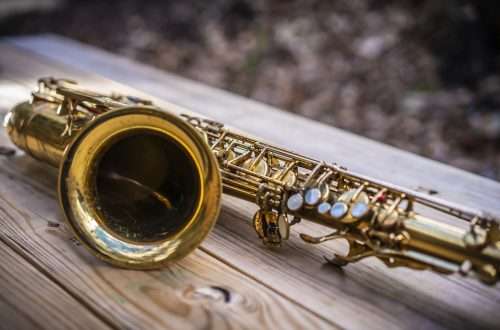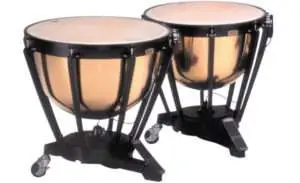
Which guitar should I start with?
Choosing the right instrument is the first important decision for an aspiring musician (and sometimes his parents). When buying a guitar, we must pay attention to its type, performance and, of course, price. It is also important that it is simply attractive to us, and, writing in industry jargon – that it “fits well in the paw”. But how to find yourself in the maze of offers and opportunities? Classic or acoustic? Fender or Gibson? Let’s start with the basics.
A box or a board?
There are many theories as to which guitar should start musical education with. Someone will say that only classical, someone else will say acoustic, etc. While each of these theories can be justified, I propose a slightly different approach. The best guitar for any aspiring guitarist is … the one he wants to play. Seriously. The type of instrument is crucial and very often determines the paths that a given musician will follow. Paweł loves AC / DC and dreams that one day he will be able to play their songs. This is his basic motivation to start the adventure with the guitar. Will buying a classic help him? Not. Asia, in turn, is infatuated with the way Andy McKee played Drifting. He chooses acoustics. Way to go.
Without favoring any of the instruments, let’s get acquainted with the three basic types of guitar.
Classical guitar
Most beginning musicians choose it because it is relatively cheap. This design has its roots in Spain and is characterized by a flat, fairly wide neck. We produce the sound by hitting nylon strings, which are less “painful” at the initial stage of learning.
The photo shows the Yamaha C 30 M (PLN 415). Other examples of models: La Mancha Rubi S (PLN 660), Admira Solista (PLN 1289), Rodrigez D Arce Brillo (PLN 2799)
Acoustic guitar
Usually it is slightly larger than the classic and has a narrower neck. It uses metal strings, which may be more difficult at first. In addition, they tighten the bar more than the nylon ones, so a tension rod is installed in the inner part of the bar. It allows you to adjust the curvature, which is responsible for the action (height) of the strings, which in this case can be adjusted, making the game easier.
Examples of models: Baton Rouge L6 (PLN 849), Fender CD 140 S (PLN 1071), Epiphone DR500MCE (PLN 1899), Ibanez AW2040 OPN (PLN 2012).
Electric guitar
Extremely popular type of guitar, the foundation of most popular music bands. The neck, as with acoustic instruments, is slightly narrower and, moreover, curved. When deciding on this type of guitar, we must remember that an equally important element is the amplifier, without which I will not play much. It is not worth saving money on it, as it largely determines the sound.
The photo shows the Fender Squier Bullet HSS BSB Tremolo (PLN 468). Other examples of models: Ibanez GRX 20 BKN (PLN 675), Yamaha Pacifica 212VQM (PLN 1339), Epiphone Les Paul Standard Plustop Pro HS (PLN 1399).
Road or cheap?
The price of the instrument is undoubtedly the main factor that ultimately determines the choice of a specific model. After all, not everyone can afford to buy an instrument for a five-digit amount. I think that all considerations can be reduced to two simple questions.
Does a good instrument have to be expensive?
As it happens in art – everything is relative. Everyone has a different definition of a “good instrument”, everyone pays attention to something different. For one person, it will be important to have a fingerboard made of Brazilian rosewood as part of a limited series of a recognized luthier. Someone else will pick the old crumbling loss because it just sounds better to them. There are no rules, it’s all a matter of taste and personal aesthetic sense. The fact is, however, that the more expensive the materials, the more expensive the final product. At the same time, many theoretically lower-end guitars can play around the world. In my professional work, I recorded more session recordings on acoustics for about two thousand zlotys than on an elite instrument worth almost ten times more. The customer decided.
Get the best instrument you can afford. Don’t be guided by the price, but by the sound. Drop into Music and beat a few models of the same line. Choose the guitar you feel most comfortable with and most comfortable to play.
Is an expensive instrument always good?
For many teenage years I lived with the thought that I would finally get my dream Suhra. At that time, it cost several thousand. I didn’t even want to play him. I knew that it would fit perfectly into any project and I would play anything on it. A few years have passed and… it worked. I had my dream guitar. It sounded bland, expressionless, nobody wanted it at concerts and recordings, and what’s more … It had a manufacturing defect. Brand new, from the store, at the cost of my annual income. I had to return it.
Even an expensive and dream instrument must first be tested and dodged. Don’t be fooled by the brand, bullshit happens everywhere. You will spend hours with your new instrument – make sure everything is ok.
Comments
Useful text – but … how am I supposed to ″ play ″ a guitar in a store, if I am not even sure how to hold it properly? … sound. I can’t play, but I have hearing 🙂 In one shop (″ professional ″) you stubbornly pressed Everplay on me, scolding Yamaha’s ″ crap. In another, I found out that when I want to learn to play, Alhambra Z is the absolute minimum … And be smart here, man 🙂
pelligro
I want to start with the acoustic one because I can’t afford good electric + good stove; d
conrad
Really great text for a beginner. I’ve learned a lot.
Aleksy





